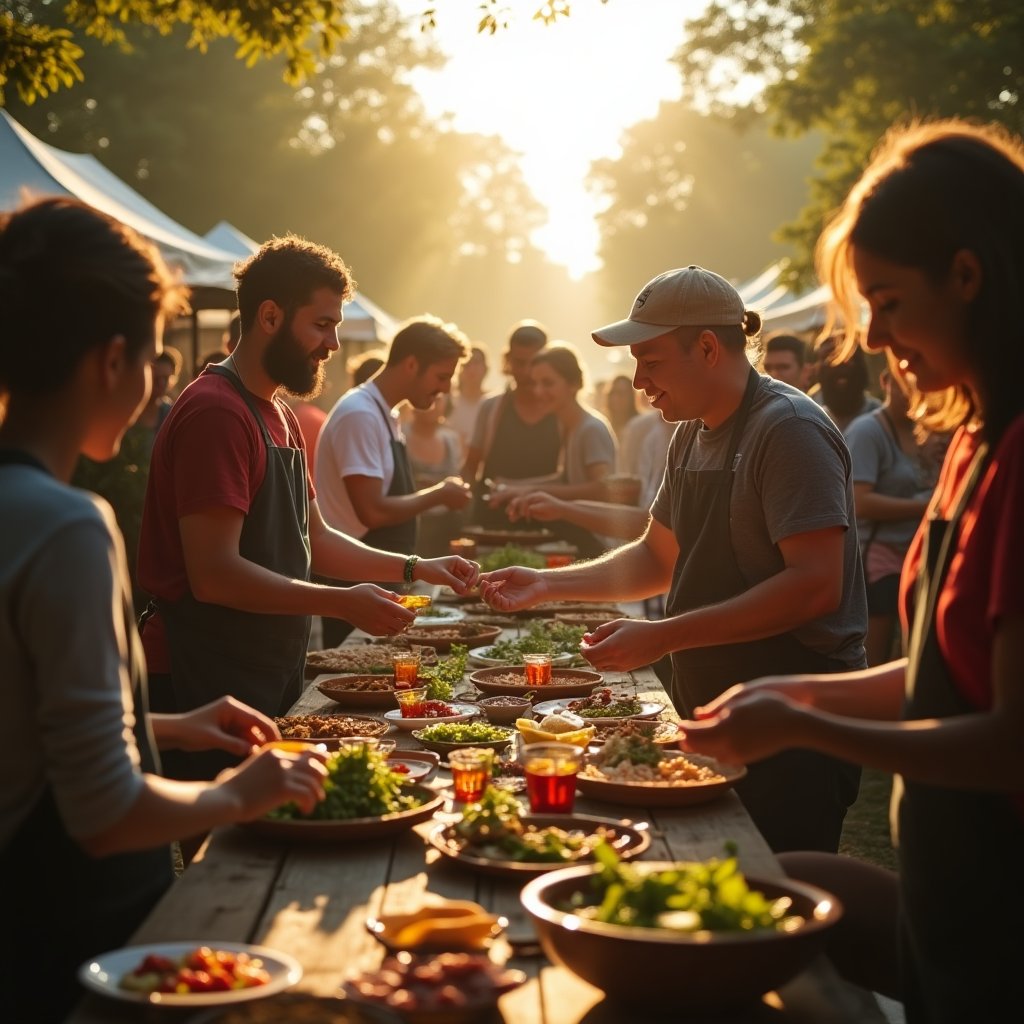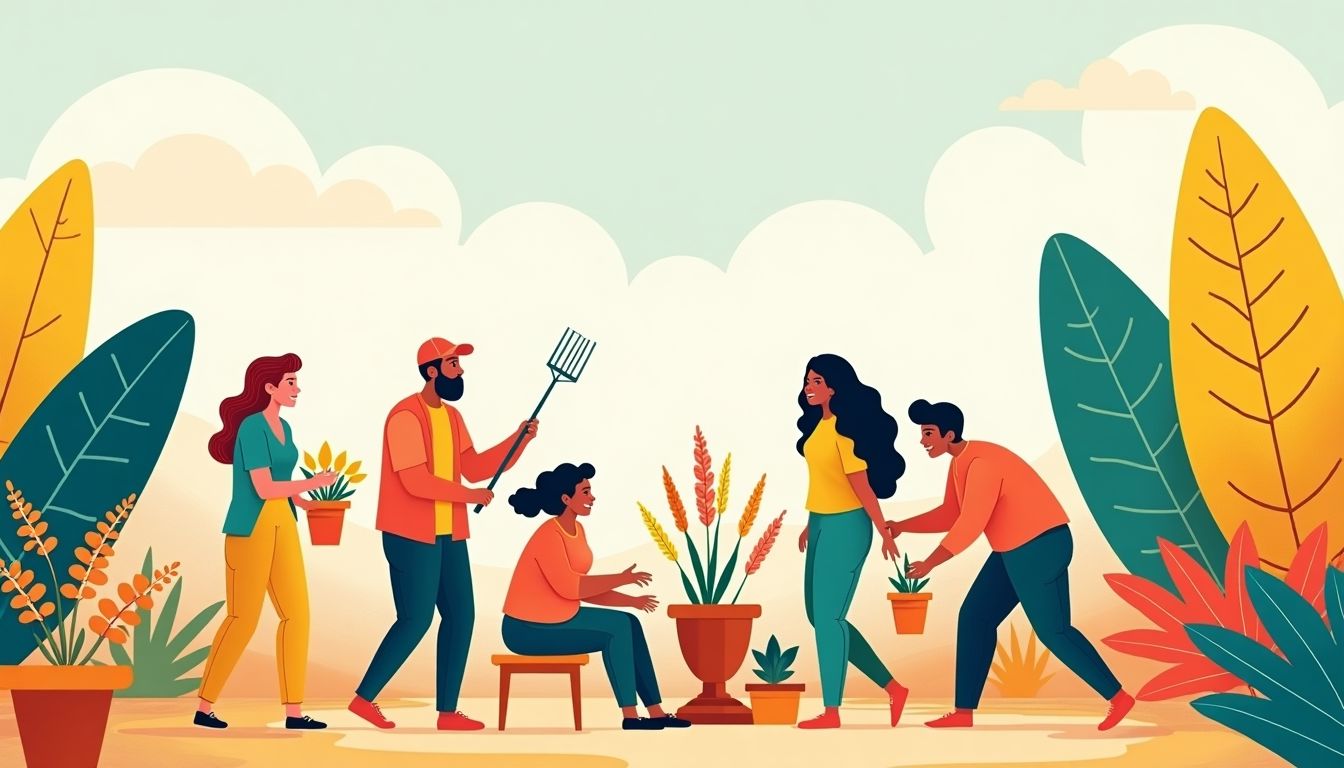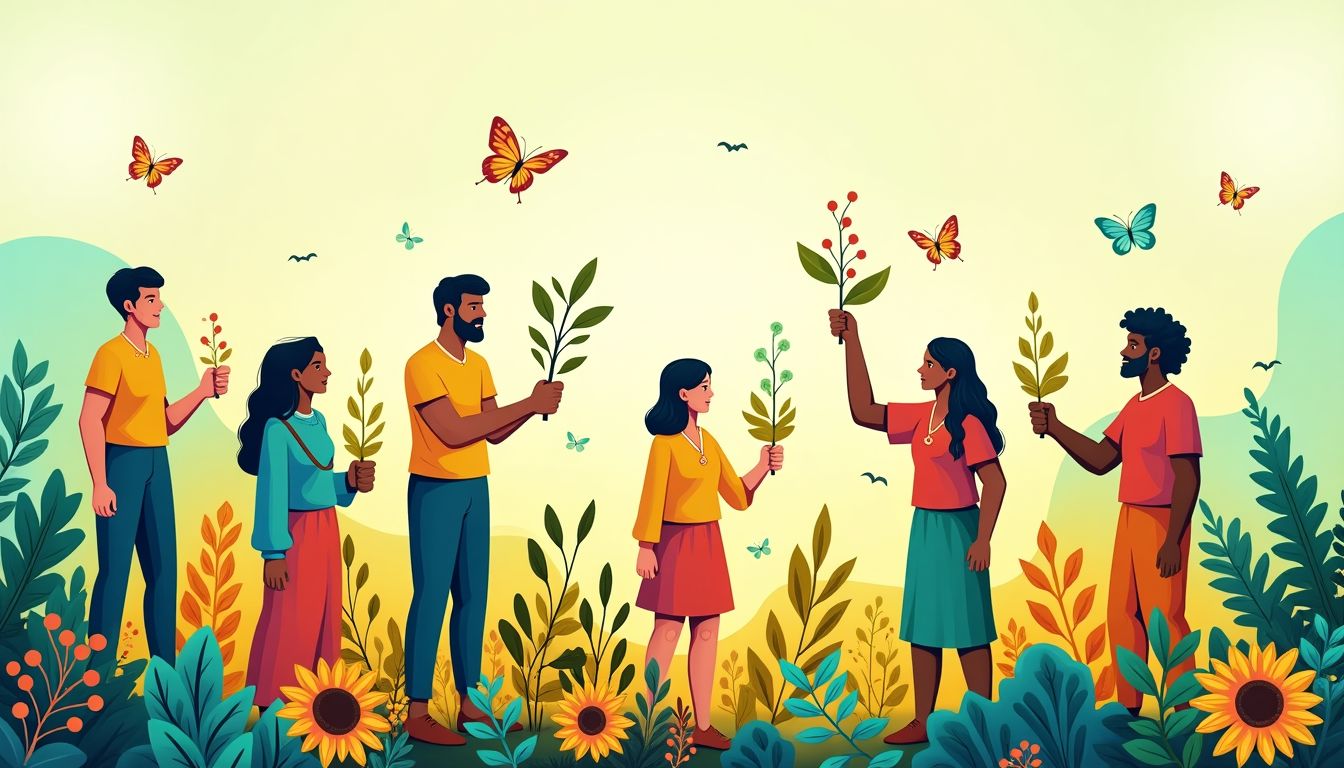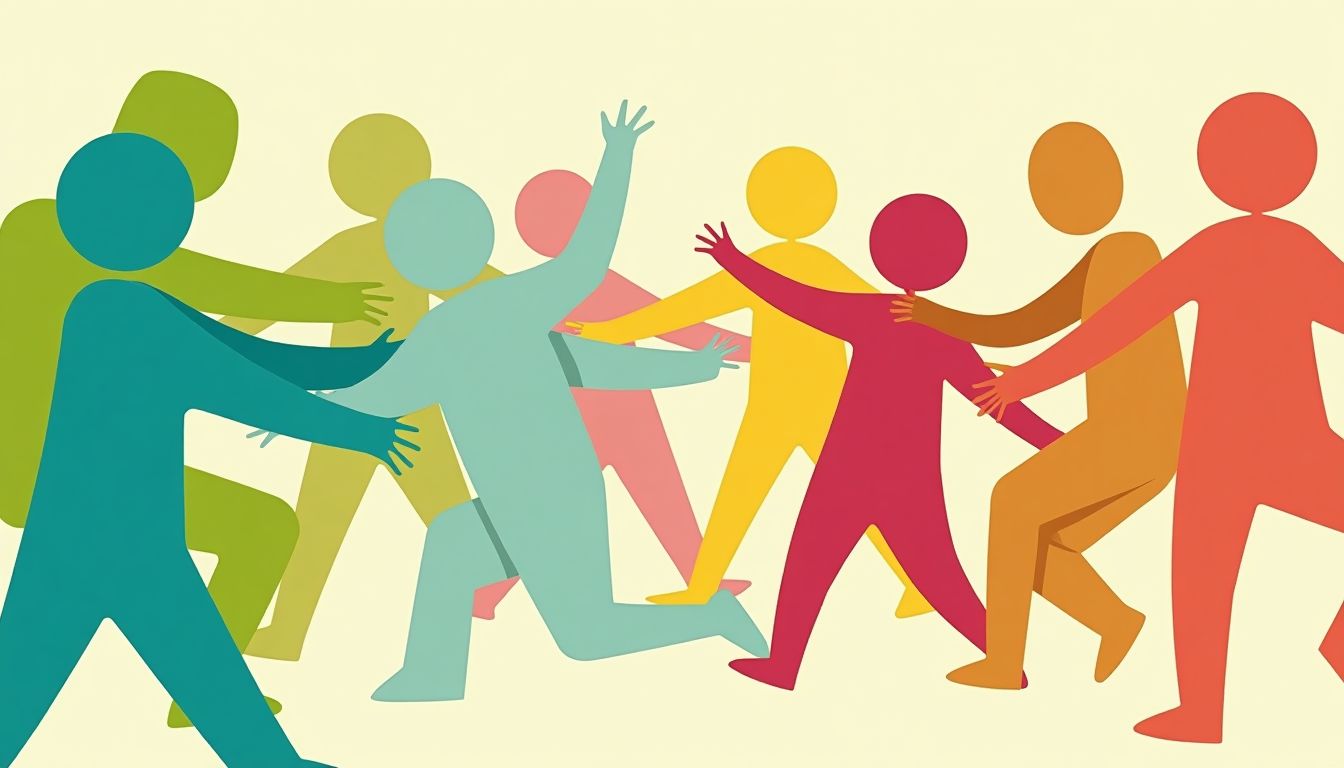Introduction: What's Left When Work is Gone?
The only thing we have to fear is fear itself. - Franklin D. Roosevelt. This famous quote resonates with us, especially in times of uncertainty, such as when contemplating a future without traditional work. As automation and artificial intelligence (AI) seep into our daily lives, we face questions about our roles, our identities, and the relationships that bind us together. If our jobs, the very backbone of our communities, become obsolete, what will take their place? This exploration dives deep into what remains when work is gone and how we can rebuild our communities around shared experiences and connections rather than mere economic productivity.
But here’s a thought-provoking twist: what if the end of work isn't the end at all, but rather, a bold new beginning? Is it possible that our society could flourish even more, rewriting the definition of success in a collaborative communal setting? This article is here to ponder these questions and spark a conversation about a post-work world where community thrives on solidarity, creativity, and mutual support.
Renowned authors such as Matthew Desmond, who wrote Evicted, have explored how economic hardships affect social networks. Philosopher Hannah Arendt has similarly discussed how work shapes human existence and society. Moreover, popular scientists like Michio Kaku have warned us about the implications of technology on jobs and social structures. Their insights highlight the complex interdependencies we face as we navigate through these transforming tides.
1. The Decline of Traditional Work and Its Implications
As we march into an era of rapid change, traditional work seems to be slipping through our fingers like grains of sand. The rise of automation, artificial intelligence, and remote work technologies is altering the landscape of employment. But what does this all mean for us? This section will examine the implications of these changes on our sense of purpose, identity, and belonging.
1.1 The Historical Context of Work
Historically, work has been the heartbeat of communities. From our ancestors toiling the fields in agrarian societies to the mass migrations into bustling factories during the industrial revolution, the concept of work has often defined our lives and our communities. Imagine a world where everyone banded together to survive, sharing resources and labor—a heartwarming notion that seems almost foreign in our fast-paced modern lives. In bygone eras, people's identities were closely tied to their jobs; community centers echoed with the sounds of labor, camaraderie, and shared experiences. Today, however, with the ticking clock of economic change urging us forward, we are beginning to question this deep-rooted connection.
1.2 Psychological Impact of Job Loss
In a world where employment is uncertain or disappearing, the psychological toll can be profound. Losing a job can feel like losing a part of oneself—confidence takes a hit, community connections can fray, and a sense of purpose may evaporate into thin air, much like the morning mist. According to a study by the American Psychological Association, the consequences of job loss often extend beyond financial issues, spilling over into mental health crises and social isolation. Without jobs to define us, how do we recalibrate our personal identities and interpersonal relationships?
2. The Rise of Community-Centric Values
As work becomes less central to our lives, community-centric values are starting to take precedence. The way we connect with each other is changing. It's like going from a fast-food drive-thru to a cozy dinner party. Here, we explore how these shifts can lead to healthier, more connected societies.
2.1 Mutual Aid and Cooperative Models
Imagine living in a world where your neighbor lends you a cup of sugar, and you return the favor by watering their plants when they're on vacation. That’s the spirit of mutual aid! It’s about people helping each other out without expecting money in return. Cooperative models are popping up everywhere—from community-supported agriculture like local farms to co-op grocery stores. These approaches shift the focus from profit to community well-being.
2.2 Redefining Success Beyond Productivity
In our traditional world, success often meant climbing the corporate ladder, making piles of cash, and hoarding more “stuff” than we could ever use. But what if that definition flipped upside down? In post-work communities, we can redefine success by prioritizing well-being, social connections, and shared experiences. A great example is the Stanford Happiness Index, which suggests that the happiest people prioritize relationships, not bank accounts. Is it time to swap out that shiny new car for more hangouts with friends? You bet!
3. Building Resilience through Shared Experiences
This section explores how shared experiences can foster resilience within communities, creating bonds that endure beyond traditional employment. Think of it like building a human fortress—stronger together than alone!
3.1 Community Events and Gatherings
Remember those epic block parties from childhood? There's truly nothing like coming together to enjoy food, games, and laughter. Community events and gatherings—like National Night Out—create opportunities for residents to celebrate together. These gatherings build solidarity, remind us of our common goals, and often create lasting friendships. Who doesn't love sharing a slice of pie and finding out your neighbor is just as strange as you?
3.2 Skill-Sharing and Development
Ever wanted to learn how to bake bread or fix a flat tire? Skill-sharing workshops can bring these skills right to your backyard. Imagine learning from the local handyman or that awesome baker down the street. It’s a win-win! Not only do you learn valuable skills, but you also get to meet people in your community. One platform making this happen is Skillshare, where you can find classes on everything from photography to coding. You might even walk away with new pals! Who knew that learning could be this much fun?
4. Leveraging Technology for Community Building
In our fast-paced and digital age, technology can often feel like a mixed bag. On one hand, it can pull us away from meaningful connections; on the other, it has the potential to unite us in remarkable ways. As we transition into a post-work world, it's essential to embrace technology in ways that promote bonding and unity within our communities. This section dives into how digital tools can foster connections and engagement.
4.1 Digital Platforms for Community Engagement
Online technologies play a vital role in connecting individuals and groups, allowing them to share their passions and interests, regardless of geographical constraints. Here's how digital platforms can help strengthen community ties:
- Online Forums: Platforms like Reddit or Facebook can host discussions around local interests, events, and ideas.
- Social Media Groups: Creating dedicated Facebook groups or LinkedIn pages can facilitate communication and coordination for community initiatives.
- Event Planning Tools: Websites like Eventbrite can help organize local gatherings and keep members informed about upcoming activities.
- Community Messaging Apps: Platforms like Slack or Discord can foster chatter and collaboration among users with shared interests.
Using these online tools effectively can create an inclusive environment where everyone feels connected. With the right application of tech, community members can engage, share resources, and even offer help to one another. These connections can ultimately lead to stronger social bonds that translate into real-world initiatives.
4.2 Hybrid Models of Community Building
The concept of hybrid models combines online and offline interactions, ensuring that communities can thrive regardless of prevailing circumstances. Consider the importance of blending digital engagement with physical gatherings:
| Activity Type | In-Person | Online |
|---|---|---|
| Meetings | Local community meetings | Virtual town halls via Zoom |
| Workshops | Hands-on skill-sharing events | Online tutorials or webinars |
| Social Events | Picnics and festivals | Virtual game nights or movie screenings |
Implementing hybrid models allows communities to adapt to different situations, ensuring that everyone remains engaged, even if they can't meet in person. These approaches can create diverse avenues for interaction that cater to various preferences, encouraging participation from all sections of society.
5. Case Studies: Communities in Transition
To understand the practical application of community-centric ideas, let's explore some remarkable case studies where communities have made strides in navigating the transition towards a focus on connection and shared values. These examples not only inspire hope but also provide actionable insights.
5.1 The Community Garden Movement
One of the most heartwarming movements to emerge from the quest for community connection is the community garden initiative. These gardens not only beautify urban spaces but also bring people together through shared labor. Take a look at some notable examples:
- The Seattle Community Garden Network: This organization has an extensive network of community gardens that thrive on shared resources and skills. You can explore their initiatives here.
- New York City’s GreenThumb: With over 600 community gardens, GreenThumb empowers NYC residents to cultivate both food and friendships in a bustling metropolis where green space is limited.
By participating in these gardens, community members not only gain access to fresh produce but also engage in meaningful social interactions that strengthen their bonds. Gardening fosters collaboration and encourages interdependence, leading to more resilient neighborhoods.
5.2 Time Banks as Alternative Economies
Time banking represents an exciting alternative to conventional economic models, promoting the idea that everyone's time has equal value. Here’s how it works:
- Community members offer services based on time, such as cooking, tutoring, or childcare, earning "time credits" for their contributions.
- Participants can exchange these credits for the services they need from others in the network.
Examples include:
- The Time Bank in Ithaca, New York: This time bank has flourished for over a decade, creating a supportive network that emphasizes community cooperation. Check out more about it here.
- Synergy Time Bank in the UK: By promoting the sharing of skills, it has fostered supportive communities that thrive on mutual aid. Find out more here.
Through time banks, communities can elevate the value of cooperative efforts, allowing people to contribute their skills according to their passions and abilities. This approach continuously strengthens connections and engenders goodwill among community members.
6. AI Solutions: How Would AI Tackle This Issue?
If you were an AI yourself, how would you concretely tackle the issue of rebuilding community in a post-work society? Let’s dive in, using creativity and technology to drive innovation and reshape the way we connect with each other.
6.1 Data Gathering for Community Insights
First and foremost, an AI system can analyze community data to highlight specific needs and preferences. By implementing surveys and utilizing social media analytics, the AI could identify what brings people together. This data can provide invaluable insights on demographics, interests, and local resources. Platforms like SurveyMonkey could facilitate easy community outreach.
6.2 Predictive Modeling for Community Engagement
Using the gathered data, AI can create predictive models to forecast participation rates in various community events. Think of it as a crystal ball for community organizers. If the data shows that similar communities thrive on cooperative learning workshops, planners can prioritize these initiatives. Deep learning algorithms—like those from TensorFlow—can contribute by offering insight into optimal timing and topics that engage community members.
6.3 Collaborative AI Platforms
An AI-driven platform can facilitate collaboration among community members. Imagine a centralized hub where talents, skills, and resources can be exchanged. Through AI algorithms, the platform can curate matchmaking processes for people seeking mentorship, co-learning opportunities, or project partners. This could resemble existing platforms like Meetup, but with enhanced AI-driven features analyzing community dynamics.
Conclusion: A Roadmap to Rebuild Community in a Post-Work Era
The journey toward a thriving communal life in a world transitioning beyond traditional work demands innovation and determination. To facilitate this transformation, here is a detailed Actions Schedule/Roadmap that spans from Day 1 to Year 2, presenting a framework for anyone – institutions, organizations, groups, or governments – to enact.
Day 1:
Conduct initial meetings with local stakeholders, including community leaders, educators, and tech innovators to discuss a vision for community rebuilding.
Day 2:
Utilize various digital platforms to create an engaging survey. Gather input from community members about their desires for engagement and collective action.
Day 3:
Launch a multifunctional online platform for: 1) discussions, 2) event organization, and 3) resource-sharing, collaborating with platforms like Slack for ongoing communication.
Week 1:
Hold a community forum (physical and virtual) to present ideas while gathering feedback with platforms such as Eventbrite for event management.
Week 2:
Initiate pilot projects based on survey results. Options include a community garden for shared space or skill-sharing workshops for enhancing connectivity.
Week 3:
Evaluate pilot project outcomes and adapt methods based on community feedback. Utilize platforms like Mentimeter to collect live feedback at gatherings.
Month 1:
Begin marketing for larger community events with an emphasis on talent shows and cultural celebrations. Tap into local influencers to promote through social media.
Month 2:
Cycle back to reassess progress, identifying strengths and areas for improvement. Gather collaborative feedback from community members utilizing online tools.
Month 3:
Host a review meeting with all involved stakeholders, evaluating community growth. Encourage continuous participation to adapt and thrive.
Year 1:
Establish permanent committees, such as cultural ambassadors and skill-sharing coordinators, firmly rooted in community engagement.
Year 1.5:
Expand on initial efforts with significant outreach, harnessing the power of social media campaigns and local press channels for broader participation.
Year 2:
Consolidate achievements into a comprehensive community handbook, documenting best practices for lasting growth and influence. Share this resource both online and in local libraries or community centers.
This roadmap aims to transform communities by cultivating engagement and connection, pulling on the fabric of our shared existence. In a world shifting toward a future that seems uncertain, one thing remains clear: we must come together to build the bonds that will sustain us. Only by prioritizing our connections with others can we create a compelling narrative that resonates deep within the human experience.
FAQ
What does a community look like without traditional work?
A community without traditional work focuses on shared interests, cooperative learning, and mutual support. Instead of just trading services for money, people build relationships based on trust and common goals. Here are some key characteristics:
- Strong social bonds
- Opportunities for skill-sharing
- Common events and gatherings
- Focus on community well-being rather than just productivity
How can communities promote social connections in a post-work world?
Communities can grow stronger by creating spaces and events that bring people together. Here are a few ideas to foster these connections:
- Regular community meet-ups or potlucks
- Organizing community projects like clean-up days or gardening
- Hosting workshops that teach valuable skills
- Using social media groups for planning and communication
For social media, platforms like Facebook Groups can be excellent places to gather and discuss community activities.
What role does technology play in building community?
Technology can act like a bridge that connects people. It helps maintain communication and organize events. Here’s how:
- Online platforms can facilitate discussions and planning
- Simplified coordination of local events
- Ability to share resources and knowledge
For example, apps like Meetup help people find local gatherings based on shared interests.
How can we measure the success of community engagements?
Measuring success in your community can give you insight into what’s working. Here are some ways to track progress:
- Count participation rates in events
- Conduct feedback surveys after gatherings
- Monitor the development of new initiatives or groups
- Evaluate overall well-being through social cohesion metrics
The Community Science website offers detailed strategies on evaluating community initiatives, making it a good resource.
How can mutual aid groups help communities?
Mutual aid groups are formed to help community members support one another. In a post-work world, these groups can provide valuable resources and foster connections. They often include:
- Sharing necessities like food and clothing
- Offering help to those with disabilities or elderly members
- Pooling resources for community projects
Organizations like the Mutual Aid Network show how communities can mobilize to support one another, highlighting the spirit of cooperation.
What skills are most beneficial in a community-focused environment?
In a community-centered world, some skills will be more valuable than in a traditional job setting. Here are a few key abilities to develop:
- Communication and interpersonal skills
- Organizational skills for coordinated events
- Ability to teach and share knowledge
- Adaptability and resilience in facing challenges
Programs at institutions like Coursera offer courses on these important skills that can aid both personal development and community enhancement.
How does the concept of time banking work?
Time banking is a unique way to exchange services based on time instead of money. In this model, members earn credits by helping others, which they can then use to receive services. Here are some benefits:
- Everyone’s time is valued equally, fostering fairness and equity
- Encourages participation and connection through service
- Builds a sense of community and mutual reliance
To learn more about time banking, you can explore sites like the TimeBanks USA.
Wait! There's more...check out our gripping short story that continues the journey: The Ravens of Ashbrook
Disclaimer: This article may contain affiliate links. If you click on these links and make a purchase, we may receive a commission at no additional cost to you. Our recommendations and reviews are always independent and objective, aiming to provide you with the best information and resources.
Get Exclusive Stories, Photos, Art & Offers - Subscribe Today!





























1 comment